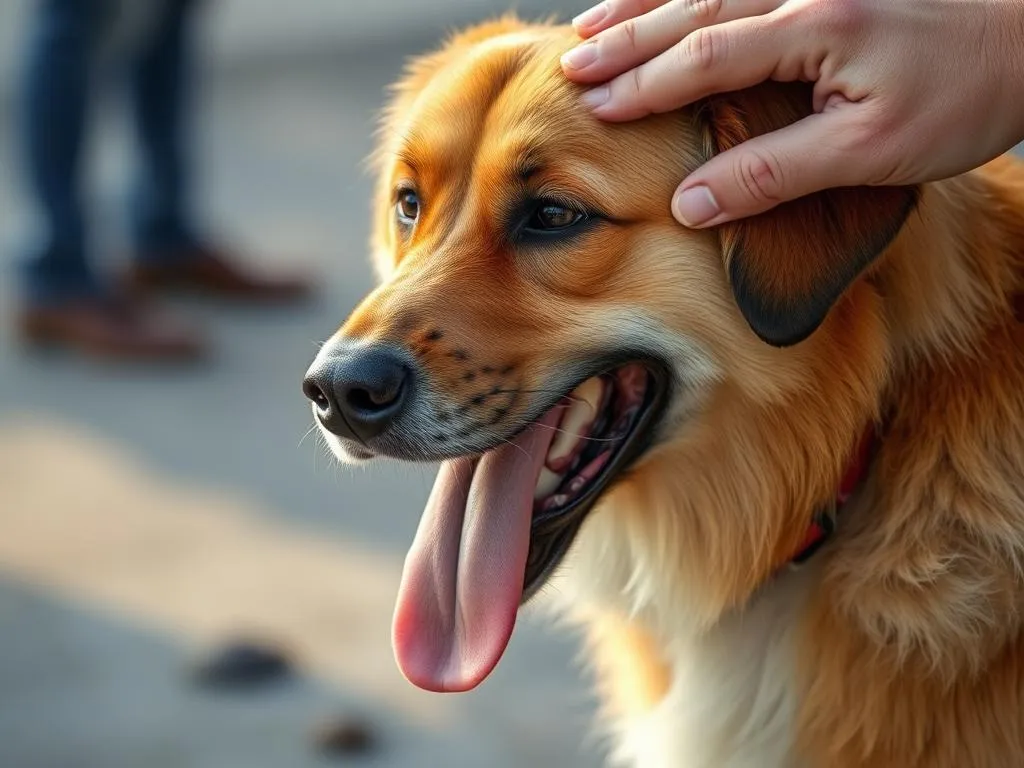
When it comes to caring for our canine companions, understanding dog behavior and communication is crucial for their health and well-being. One common interaction that many dog owners and enthusiasts engage in is patting a dog on the head. However, it’s essential to recognize that this seemingly innocent gesture can sometimes have negative consequences for the dog. In this article, we will delve into why you should never pat a dog on the head, exploring the implications for their health, behavior, and the overall relationship between humans and dogs.
Understanding Dog Behavior
Canine Communication
Dogs communicate primarily through body language, vocalizations, and facial expressions. Unlike humans, dogs do not rely on verbal cues to express their feelings or intentions. Instead, they use a complex system of signals that can indicate everything from happiness and excitement to fear and aggression. Understanding these signals is vital for fostering a healthy relationship with your dog.
For example, a wagging tail does not always mean a dog is happy; it can also indicate nervousness or agitation depending on the position and speed of the wag. Likewise, a dog that turns its head away or flattens its ears may be signaling discomfort or a desire to avoid conflict. Recognizing these subtle cues can help prevent misunderstandings and ensure safer interactions.
Common Misconceptions
Despite our best intentions, many misconceptions about dog interactions persist. One prevalent myth is that patting a dog on the head is universally accepted as a sign of affection. However, many dogs perceive this gesture as intrusive or threatening, especially if they are unfamiliar with the person doing the patting.
It’s crucial to understand that a dog’s comfort level varies significantly based on its individual personality, past experiences, and the context of the interaction. Therefore, head pats can often be misinterpreted, leading to stress or anxiety in the dog.
The Negative Effects of Head Patting
Stress and Anxiety in Dogs
Patting a dog on the head can inadvertently trigger stress responses, particularly in sensitive or anxious dogs. The act of reaching over a dog’s head can be perceived as a threat, as it invades their personal space and can block their line of sight. This can lead to feelings of vulnerability and fear.
Signs of anxiety in dogs when patted on the head may include:
- Cowering or shrinking away
- Tucking the tail between their legs
- Licking their lips or yawning excessively
- Growling or showing teeth
Recognizing these signs is vital for responding appropriately to your dog’s needs. If you observe any of these behaviors, it’s crucial to stop the interaction immediately and allow the dog to regain its composure.
Impact on Trust and Relationship
Negative interactions, such as unwanted head pats, can significantly affect the trust between a dog and its owner. Trust is foundational in a healthy human-dog relationship, and if a dog feels threatened or uncomfortable during interactions, it may become fearful or defensive over time.
Building a healthy relationship with your dog requires patience and understanding. Instead of approaching a dog head-on, consider taking a more gradual approach by allowing the dog to come to you. This fosters a sense of security and helps to establish trust.
Alternative Ways to Show Affection
Appropriate Areas to Pet Your Dog
Instead of patting a dog on the head, there are several other areas that are generally considered acceptable for petting. These areas include:
- Chin: Many dogs appreciate gentle rubs under the chin.
- Side of the body: Petting along the sides allows the dog to feel more secure.
- Back: A light stroke down the back can be comforting.
Always observe your dog’s body language when petting. If the dog leans into your hand or shows signs of relaxation, it’s likely enjoying the interaction. However, if it pulls away or shows signs of discomfort, it’s best to stop.
Engaging in Interactive Play
One of the best ways to bond with your dog is through interactive play. Not only does play promote physical health, but it also strengthens the emotional connection between you and your dog. Engaging in activities like fetch, tug-of-war, or hide-and-seek can provide mental stimulation and exercise, contributing to your dog’s overall well-being.
Games that encourage problem-solving, such as puzzle toys or treat-dispensing toys, can also foster trust and communication. Such activities allow dogs to express their natural instincts while reinforcing the bond between you.
Educating Others About Dog Care
Promoting Safe Interactions
Educating friends and family about dog behavior is essential for promoting safe interactions with your dog. Discussing the importance of understanding a dog’s body language and respecting their personal space can help prevent uncomfortable situations.
When introducing yourself to a new dog, it’s best to approach slowly and allow the dog to sniff your hand before attempting any interaction. This allows the dog to gauge your intentions and feel more at ease.
Resources for Learning
There are countless resources available for learning about dog behavior. Books, websites, and courses can provide valuable insights into canine communication and care. Professional trainers and behaviorists play a crucial role in promoting safe interactions and can help you better understand your dog’s behavior.
Joining local dog training classes or workshops can also be a great way to learn more about effective training techniques and safe handling practices.
Health Implications of Misunderstanding Dog Behavior
Physical Health Risks
Misunderstanding dog behavior can lead to physical health risks for both the dog and the person interacting with them. For instance, a dog that feels threatened may react defensively, resulting in bites or scratches. Understanding the signs of discomfort can help prevent these interactions from escalating into dangerous situations.
Moreover, rough handling or inappropriate petting can lead to injuries for the dog, particularly if it involves pulling on sensitive areas like the ears or tail.
Psychological Effects on Dogs
The psychological effects of negative interactions can be profound. Dogs that experience frequent stress or fear due to misunderstood behavior may develop long-term behavioral issues. This can manifest as aggression, anxiety, or avoidance behaviors, which can complicate the dog’s ability to interact positively with people and other animals.
Research shows a correlation between chronic stress and various health issues in dogs, including weakened immune systems and digestive problems. Ensuring that your dog feels safe and comfortable can help mitigate these risks.
Case Studies and Real-Life Experiences
Anecdotal Evidence
Many dog owners have shared personal stories about their experiences with head patting. Some have noted that their dogs became increasingly anxious and withdrawn after repeated head pats from well-meaning strangers. These anecdotes often highlight the importance of understanding individual dog personalities and respecting their boundaries.
Expert Opinions
Veterinarians and animal behaviorists emphasize the importance of recognizing how dogs perceive human interactions. Experts advocate for positive reinforcement techniques and stress the need for patience during training. Research studies have also explored the effects of human interaction on dog stress levels, concluding that respectful and understanding engagement leads to healthier, happier dogs.
Conclusion
Understanding dog behavior is essential for ensuring the health and well-being of our canine companions. Recognizing why you should never pat a dog on the head can help prevent unnecessary stress and anxiety for your dog.
By fostering a bond based on trust and respect, utilizing appropriate petting techniques, and engaging in interactive play, we can create a positive environment for our dogs. Ultimately, responsible and informed dog interactions will lead to better health outcomes, ensuring our furry friends lead happy and fulfilled lives.









